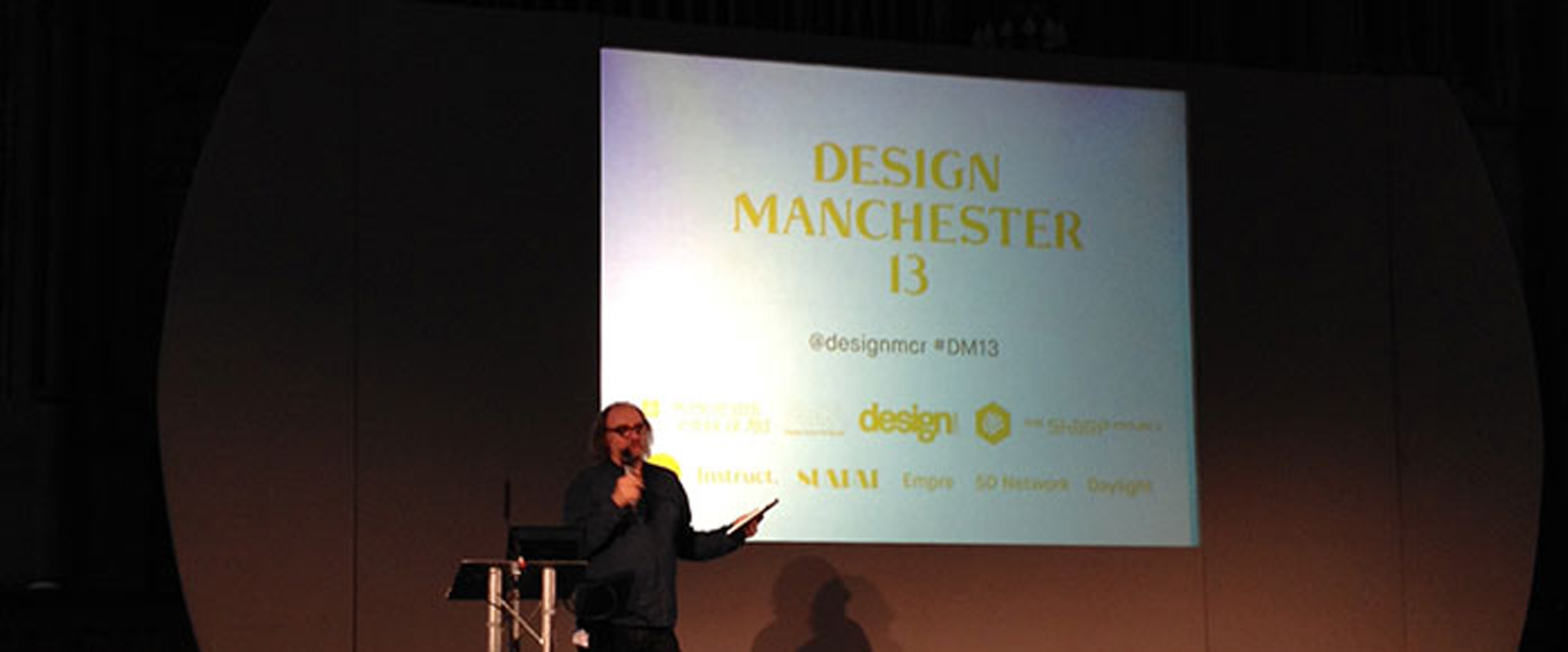Late last year I attended the Design Manchester 13 festival which was a week-long event celebrating creativity, collaboration and inclusivity centred around art, design, illustration, animation and photography. The theme for the event was Longevity.
The Manchester Town Hall event included talks from hilarious artist Andrew Shoben from Greyworld, über-hip creative Kate Moross, suitably geek independent type foundry Colophon and designer Mark Farrow, who became well known for designing experimental sleeves and posters for Factory Records and The Hacienda.
My favourite piece of Mark’s work is the incredible pill style packaging for Spiritualized’s ‘Ladies and Gentlemen…’, on which he commented “When we do stuff, we really f***ing do it!”. Quite.
But I digress. The theme of of the event was longevity and the only people to really touch on the topic significantly were user experience designer Nat hunter (founding director of innovative design studio Airside fact fans) and eco trailblazer Mark Shayler who were discussing The Great Recovery project.
The Great Recovery aims to encourage designers to minimise waste from the products they create. They’re doing this by building networks to explore the issues and bring designers together with people in different parts of the product chain like marketers, chemists and recovery experts.
It really got me thinking about how people process things and how they will be recycled. They were pushing the idea that you should try and think about life cycles when you design anything. To really work out how it is made and to design for longevity, which really means we need to make a shift in thinking to consider the system as a whole rather than focus on individual products. They propose a more circular system that opposes our current model of ‘take-make-dispose’.
Nat talks further on all these issues in this panel debate on the role designers must take in driving a sustainable manufacturing model.
We all know planned obsolescence is bad, but longevity challenges current economic models. We need new business models, or so I’m told. You might need to speak to an economist to tell you how that might work.
In the Redesigning the Future video, Jonathan Chapman talks about planned obsolescence. He says the term comes from a guy called Bernard London in 1932, who wrote a paper called ‘Ending depression through planned obsolescence’. It seemed like a great idea at the time, based on what he knew then, but it doesn’t seem like such a good idea now, as we know a bit more about the consequences of ever more rapid production and disposal of things.
So what new models are there now? There’s a growing movement to share and lease things rather than owning them, like Zipcar.
Or what about if we didn’t own light bulbs?
We were shown a video created by The Agency of Design that demonstrated the redesign of an LED lightbulb from the focus of cyclic materials. The challenge being how to recycle the parts of the bulb when they come to the end of their operational life, reclaiming the raw materials used. One clever solution they came up with is to have a Wi-Fi connected bulb that informs the supplier when a new bulb is due allowing them to send a pre-emptive replacement AND collect the old bulb, making it easier to recover materials for recycling! This could mean that instead of buying light bulbs, customers pay an annual fee that includes replacement and recycling.
It’s light-bulb moments like that (ahem, pardon the pun) that will help us live in a more sustainable future.
You can find out more about The Great Recovery project here.
